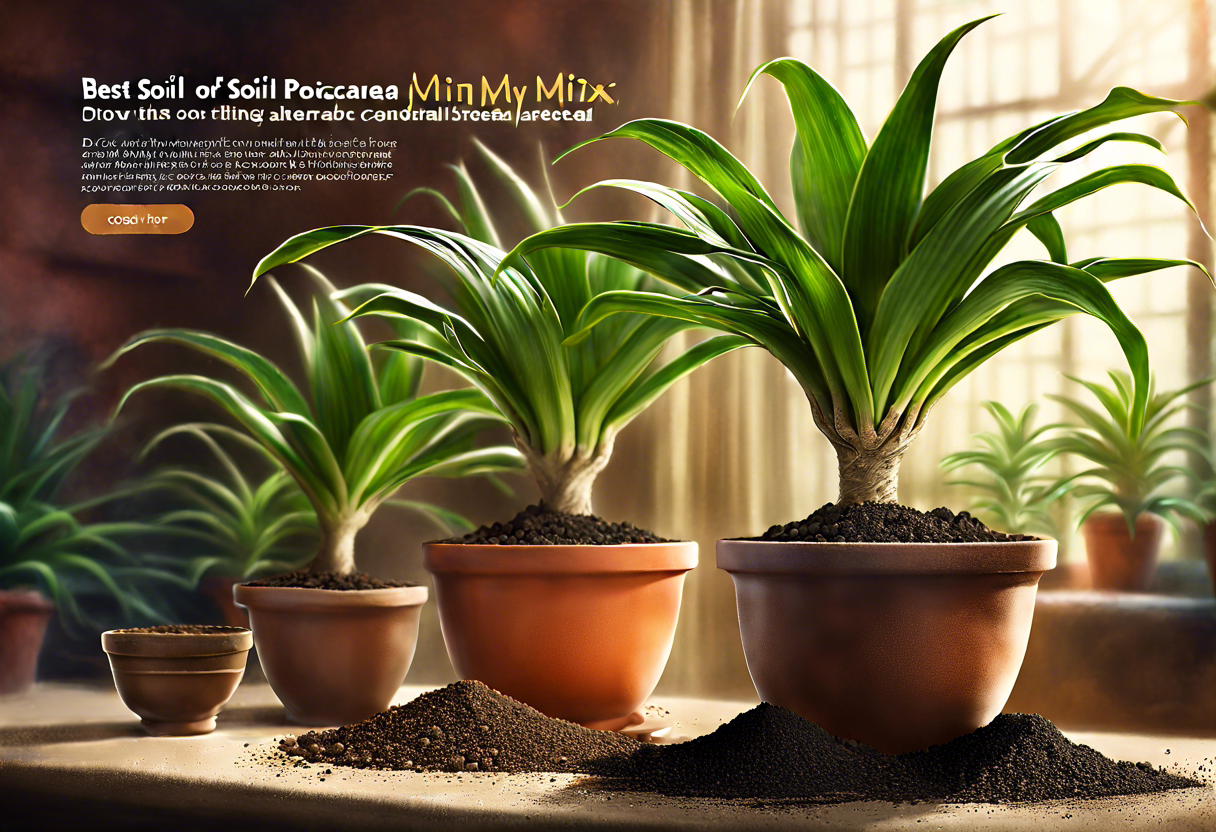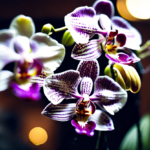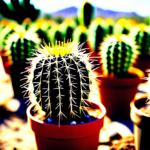Benefits of Using Well-Draining Soil or Potting Mix for Dracaena Plants
Dracaena plants, with their vibrant foliage and air-purifying qualities, have become popular indoor houseplants. To ensure their healthy growth and longevity, it is crucial to provide them with the best soil or potting mix. Opting for a well-draining soil or potting mix offers several benefits that contribute to the overall well-being of Dracaena plants.
1. Prevents Root Rot: One of the primary advantages of using well-draining soil or potting mix is the prevention of root rot. Dracaena plants are susceptible to root rot if their roots are constantly exposed to waterlogged conditions. A well-draining mix allows excess water to flow away, preventing the roots from sitting in water and rotting.
2. Enhances Nutrient Absorption: Well-draining soil or potting mix helps in the proper absorption of essential nutrients by the Dracaena plants. When the soil is well-drained, the roots can access the optimal amount of nutrients present in the soil. This promotes healthy growth and vitality in the plants.
3. Facilitates Oxygen Circulation: Adequate oxygen supply is vital for the growth of Dracaena plants. Well-draining soil allows air to reach the roots, ensuring proper oxygen circulation. This enables the roots to respire and perform their metabolic functions effectively.
4. Prevents Fungal Diseases: Excessive moisture in the soil can create favorable conditions for the growth of fungi and other pathogens. Well-draining soil or potting mix minimizes the chances of fungal diseases, such as root rot and powdery mildew, by reducing the moisture content in the root zone.
5. Reduces the Risk of Overwatering: Overwatering is a common mistake made by plant owners, leading to detrimental consequences for Dracaena plants. Using well-draining soil or potting mix helps maintain the right moisture balance in the root zone, reducing the risk of overwatering.
6. Promotes Strong Root Development: Dracaena plants thrive when their roots are healthy and well-established. Well-draining soil or potting mix promotes strong root development by allowing the roots to grow freely and establish a robust network in the growing medium.
Using a well-draining soil or potting mix for Dracaena plants offers multiple benefits, including preventing root rot, enhancing nutrient absorption, facilitating oxygen circulation, preventing fungal diseases, reducing the risk of overwatering, and promoting strong root development. By providing the best soil conditions, you can ensure the long-term health and vitality of your beautiful Dracaena plants.
Factors to consider when choosing the best soil or potting mix for Dracaena
Dracaena plants are known for their striking foliage and ability to thrive in indoor environments. To ensure their optimal growth and health, it is crucial to choose the right soil or potting mix. Here are some key factors to consider when selecting the best soil or potting mix for your Dracaena:
1. Drainage: Dracaena plants prefer soil that provides good drainage. Excess moisture can lead to root rot and other fungal diseases. Look for a well-draining potting mix that allows water to flow freely through the soil. Avoid heavy clay-based soils, as they tend to retain water.
2. Organic Matter: organic matter into the soil or potting mix can improve its structure, water-holding capacity, and nutrient content. Organic matter such as compost, peat moss, or well-rotted manure can provide essential nutrients to the Dracaena plants and promote healthy root development.
3. pH Level: Dracaena plants prefer slightly acidic to neutral soil pH levels ranging from 6.0 to 7.0. It is important to check the pH level of the soil or potting mix before planting your Dracaena. Adjust the pH, if necessary, using amendments such as lime to raise pH or sulfur to lower pH.
4. Nutrient Content: Dracaena plants have moderate nutrient requirements. Look for a soil or potting mix that contains a balanced blend of essential nutrients, including nitrogen (N), phosphorus (P), and potassium (K). Alternatively, you can use slow-release fertilizers or incorporate organic fertilizers into the mix to ensure a steady supply of nutrients to the plants.
5. Texture: The texture of the soil or potting mix is crucial for root development. A well-aerated mix with good soil structure allows roots to penetrate easily and promotes overall plant growth. Coarse materials such as perlite, vermiculite, or sand can be added to improve the texture and increase porosity.
6. Disease and Pest Resistance: Opting for a soil or potting mix that is resistant to common diseases and pests can help protect your Dracaena plants. Look for mixes labeled as disease-free and ensure they are free from any visible signs of pests or diseases.
Taking these factors into consideration will help you choose the best soil or potting mix for your Dracaena plants. Remember to re-pot your plants every 1-2 years to provide fresh nutrients and ensure their continued growth and vitality. With the right soil conditions, your Dracaena plants will flourish and bring beauty to your indoor space.
The benefits of using well-draining soil or potting mix for Dracaena plants
Dracaena plants, with their vibrant foliage and low-maintenance nature, are a popular choice among indoor gardening enthusiasts. To ensure the health and vitality of these plants, it is crucial to provide them with the best soil or potting mix. Choosing well-draining soil or potting mix is particularly important for Dracaena, as it helps prevent root rot and other issues caused by excessive moisture.
One of the significant benefits of using well-draining soil or potting mix for Dracaena is that it allows excess water to flow freely through the soil, preventing waterlogged conditions. Dracaena plants are native to regions with tropical and subtropical climates, where they typically grow in loose, well-drained soil. By replicating these natural growing conditions, you can promote optimal root health and prevent problems associated with overwatering.
Moreover, well-draining soil or potting mix ensures adequate oxygen supply to the roots. When the soil is poorly drained, air pockets in the soil become filled with water, depriving the roots of oxygen. This can lead to root suffocation and ultimately, the decline of the plant. By using a well-draining soil or potting mix, you create an environment where the roots can breathe, promoting overall plant health and vigor.
Choosing the best soil or potting mix for Dracaena involves considering several factors. First and foremost, the soil should be lightweight and porous, allowing for efficient drainage. This can be achieved by incorporating materials like perlite, vermiculite, or coarse sand into the potting mix. These additives help improve drainage while retaining enough moisture for the plant’s needs.
In addition to drainage, providing adequate nutrient retention is crucial for Dracaena plants. While well-draining soil is important, it is equally important for the soil to retain sufficient nutrients to support the plant’s growth. Organic matter, such as compost or well-rotted manure, can be incorporated into the potting mix to increase its nutrient content. Alternatively, slow-release fertilizers specifically formulated for indoor plants can be used to ensure a steady nutrient supply.
When it comes to choosing between organic and synthetic potting mix, both options can be suitable for Dracaena plants. Organic potting mix is derived from natural sources and is often rich in beneficial microorganisms that promote soil health. On the other hand, synthetic potting mix is formulated to provide specific nutrient ratios and pH levels, ensuring precise plant nutrition. It ultimately depends on personal preference and the specific needs of your Dracaena plant.
Using well-draining soil or potting mix for Dracaena plants offers numerous benefits, including preventing root rot, promoting oxygen supply, and maintaining optimal root health. When selecting the best potting mix, consider factors such as drainage, nutrient retention, and the choice between organic and synthetic options. By providing the right growing medium, you can help your Dracaena thrive and enjoy its beauty for years to come.
Organic vs. Synthetic Potting Mix: Which is Best for Dracaena?
When it comes to growing healthy and vibrant Dracaena plants, choosing the right potting mix is essential. One common dilemma that many plant enthusiasts face is deciding between organic and synthetic potting mix. Both options have their advantages and disadvantages, so it’s important to understand the differences before making a decision.
Organic potting mix is made from natural materials such as compost, peat moss, coconut coir, and perlite. These materials are rich in nutrients and have excellent water retention properties, which is ideal for Dracaena plants. Organic potting mix also promotes beneficial microbial activity in the soil, which can improve overall plant health.
On the other hand, synthetic potting mix is a blend of inorganic materials like vermiculite, perlite, and synthetic fertilizers. This type of potting mix is engineered to provide precise nutrient ratios and optimal water drainage for plant growth. Synthetic potting mix often contains slow-release fertilizers that ensure a steady supply of nutrients to the plants over time.
So, which is the better option for Dracaena plants? It ultimately depends on your preferences and gardening style. Organic potting mix is popular among environmentally conscious gardeners who prioritize sustainability and chemical-free growing. It provides a more natural growing medium and usually has a lower carbon footprint.
However, synthetic potting mix offers some unique benefits too. It often provides better drainage and aeration, reducing the risk of overwatering and root rot. Synthetic potting mix is also less prone to pest infestations and diseases due to its sterile nature. If you prefer a more hands-off approach to gardening, synthetic potting mix may be the right choice for you.
Ultimately, the best potting mix for your Dracaena plants will depend on several factors, such as your gardening style, available resources, and the specific needs of your plants. If you prefer a more natural and sustainable approach, organic potting mix is worth considering. If you prioritize precise nutrient management and ease of use, synthetic potting mix may be more suitable for you.
Regardless of which option you choose, it’s important to provide good drainage for Dracaena plants. Adding materials like perlite or sand to your potting mix can help improve drainage and prevent waterlogged roots. Regularly monitoring your plants’ moisture levels and adjusting your watering routine accordingly is also crucial for their overall health.
The choice between organic and synthetic potting mix for Dracaena plants depends on personal preferences and gardening goals. Both options have their advantages and disadvantages. Whether you choose an organic or synthetic potting mix, remember to prioritize good drainage and provide your plants with the right care and attention they need to thrive.
Common Mistakes to Avoid When Selecting Soil or Potting Mix for Dracaena
When it comes to keeping your Dracaena plants healthy and thriving, selecting the right soil or potting mix is crucial. However, there are some common mistakes that many people make when it comes to choosing the best soil for their Dracaena. By avoiding these mistakes, you can ensure that your plants have the optimal growing conditions.
1. Using heavy or compacted soil: Dracaena plants thrive in well-draining soil, as their roots are susceptible to rot if they sit in waterlogged conditions. One common mistake is using heavy or compacted soil that does not allow for proper drainage. This can lead to root rot and ultimately the death of your plant. Instead, opt for a lightweight and well-draining soil or potting mix specifically formulated for tropical plants like Dracaena.
2. Not considering the pH level: Another mistake to avoid is not considering the pH level of the soil. Dracaena plants prefer slightly acidic to neutral soil with a pH range between 6.0 and 7.0. It is important to test the pH level of the soil before potting your Dracaena to ensure that it falls within this optimal range. If the soil pH is too high or too low, it can affect the plant’s ability to absorb nutrients and result in stunted growth or nutrient deficiencies.
3. Neglecting nutrition: Dracaena plants require a balanced supply of nutrients to thrive. Many people make the mistake of using soil or potting mix that lacks essential nutrients or not incorporating fertilizer into their plant care routine. It is important to choose a soil or potting mix that is enriched with organic matter and slow-release fertilizers. Additionally, regular fertilization throughout the growing season will help provide your Dracaena with the necessary nutrients for healthy growth.
4. Over-watering or under-watering: Watering is a critical aspect of Dracaena care, and over-watering or under-watering can cause serious harm to your plants. One common mistake is watering too frequently or not allowing the soil to dry out between waterings. This can lead to root rot or dehydration. To avoid this, it is important to water your Dracaena when the top inch of soil feels dry to the touch. Additionally, ensure that the soil or potting mix you choose has good moisture retention properties while still allowing for proper drainage.
5. Using contaminated soil: Using contaminated soil can introduce harmful pathogens, pests, or diseases to your Dracaena plants. Avoid making the mistake of using soil from your garden without sterilizing it or using soil that has been contaminated with pesticides or chemicals. Opt for commercially available potting mixes that are specially formulated for indoor plants and have undergone proper sterilization processes.
By avoiding these common mistakes when selecting soil or potting mix for your Dracaena, you can provide your plants with the ideal growing conditions and ensure their long-term health and vitality.
Conclusion
Choosing the best soil or potting mix for Dracaena plants is crucial for their overall health and growth. Utilizing a well-draining soil or potting mix offers numerous benefits that can contribute to the thriving condition of these beloved houseplants.
One of the primary benefits of using well-draining soil is the prevention of waterlogging, which can lead to root rot and other fungal diseases. Dracaena plants prefer moist but not overly wet conditions, and a well-draining soil helps maintain the ideal moisture level. Additionally, a good potting mix allows for adequate air circulation, ensuring that the plant’s roots receive enough oxygen to carry out essential metabolic processes.
When choosing the best soil or potting mix for Dracaena, it is essential to consider several factors. Firstly, the soil should be loose and well-aerated, allowing for easy root penetration and growth. The pH level of the soil should be mildly acidic to neutral, as Dracaena plants typically thrive in these conditions. Moreover, the potting mix should contain beneficial nutrients to support the plant’s growth and development.
To improve drainage and nutrient retention, various soil amendments can be incorporated. Adding perlite or vermiculite to the soil mix increases its porosity and improves drainage, preventing water from pooling around the roots. Mixes with coconut coir or peat moss aid in moisture retention, ensuring the plant receives adequate water between waterings. Additionally, incorporating organic matter, such as compost or well-rotted manure, enriches the soil with nutrients, promoting overall plant vitality.
The choice between organic and synthetic potting mix depends on personal preference and the specific needs of the Dracaena plant. Organic mixes are derived from natural materials and are environmentally friendly. They provide a steady release of nutrients and contribute to the soil’s long-term health. On the other hand, synthetic mixes are manufactured with precise nutrient ratios and can offer a more consistent and controlled growth environment. However, they may require regular fertilization to maintain nutrient levels.
Being aware of common mistakes to avoid when selecting soil or potting mix for Dracaena ensures optimal plant health. Avoid using heavy garden soils, as they can hinder drainage and lead to waterlogging. Additionally, overwatering should be avoided, as it can suffocate the roots and cause root rot. It is also crucial to refrain from using soil mixes that contain high levels of chemical fertilizers, as they can damage the delicate root system of Dracaena plants.
Choosing the best soil or potting mix for Dracaena plants involves considering factors such as drainage, nutrient retention, and pH levels. Whether opting for organic or synthetic mixes, it is crucial to ensure the soil is loose, well-aerated, and provides the necessary nutrients for the plant’s growth. By avoiding common mistakes and providing the ideal soil conditions for Dracaena plants, they can thrive and bring beauty to any indoor space.


